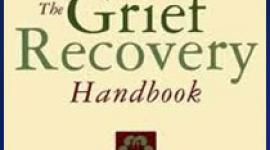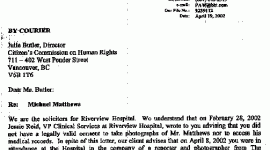Bilateral and Unilateral ECT: Effects on Verbal and Nonverbal Memory
By Larry R. Squire and Pamela Slater
American Journal of Psychiatry 135:11, November 1978
 The memory loss associated with bilateral and nondominant unilateral ECT was assessed with verbal memory tests known to be sensitive to left temporal lobe dysfunction. Bilateral ECT markedly impaired delayed retention of verbal and nonverbal material. Right unilateral ECT impaired delayed retention of nonverbal material without measurably affecting retention of verbal material. Nonverbal memory was affected less by right unilateral ECT than by bilateral ECT. These findings, taken together with a consideration of the clinical efficacy of the two types of treatment, make what appears to be a conclusive case for unilateral over bilateral ECT.
The memory loss associated with bilateral and nondominant unilateral ECT was assessed with verbal memory tests known to be sensitive to left temporal lobe dysfunction. Bilateral ECT markedly impaired delayed retention of verbal and nonverbal material. Right unilateral ECT impaired delayed retention of nonverbal material without measurably affecting retention of verbal material. Nonverbal memory was affected less by right unilateral ECT than by bilateral ECT. These findings, taken together with a consideration of the clinical efficacy of the two types of treatment, make what appears to be a conclusive case for unilateral over bilateral ECT.
Electroconvulsive therapy (ECT) has long been considered an effective treatment for depressive illness (1,2). The memory loss associated with electroconvulsive therapy treatment has been well documented (3,5). For example, following conventional bilateral treatment, memory loss can extend to events that occurred many years before treatment as well as to events that occur during the weeks after treatment. Memory functions gradually improve as time passes after treatment. (6)
It has been generally accepted that right unilateral ECT is a clinically effective treatment that produces less impairment of new learning capacity and less amnesia for remote events than bilateral ECT (7,13). However, since right unilateral ECT is specifically associated with impairment in nonverbal memory (e.g., memory for spatial relationships, faces, designs and other material that is difficult to encode verbally (14,17), and since most studies of ECT and memory loss have employed verbal memory tests, the actual extent of memory loss associated with right unilateral ECT has remained somewhat unclear. It has been suggested that the amnesic effects of left or right unilateral ECT may be similar to the effects of left or right temporal lobe dysfunction (18). Accordingly, if memory were assessed with nonverbal tests specifically sensitive to right temporal lobe dysfunction, the amnesic effect of right unilateral ECT might prove to be as great as or even greater than that of bilateral ECT.
Only two studies have addressed this issue directly, employing verbal and nonverbal memory tests with patients receiving bilateral or right unilateral ECT. In the first study (15) impairment in one nonverbal test was somewhat greater after bilateral ECT than after unilateral ECT, but this difference was not statistically significant. In the second study (16) the results were ambiguous. Impairment in a nonverbal test was greater in the unilateral group after 4 treatments, but greater in the bilateral group 3 months after treatment. That study was further complicated by the fact that one-third of the patients given unilateral treatment did not have a grand mal seizure. Finally, since it was not clear how patients with identified right unilateral lesions would perform on the nonverbal tests used in these two studies, it was difficult to be sure how specifically sensitive the tests were to right hemispheric dysfunction.
The present study investigated memory functions in patients receiving bilateral or right unilateral ECT. Assessments of memory were made with two verbal tests known to be sensitive to left temporal lobe dysfunctions and two nonverbal tests known to be sensitive to right temporal lobe dysfunction.
Method
Subjects
The subjects were 72 psychiatric inpatients (53 women and 19 men) from 4 private hospitals, who had been prescribed a course of ECT. The diagnoses as recorded upon admission by the psychiatrists were depression (N=55); this diagnosis included designations of primary affective disorder, involutional melancholia, manic-depressive, and psychotic depression, neurotic depression (N=11), schizo-affective disorder (N=5), and hysterical personality (N=1). Patients with neurological disorders, schizophrenia with depression, depression secondary to alcoholism or drug abuse and patients who had received ECT during the previous 12 months were excluded from the study. Most of the patients (N=45) had not received ECT before; 27 had received ECT 1 to 15 years earlier.
The 72 patients in the study were assigned to 3 groups (table 1). Group 1 consisted of 33 patients who had been prescribed bilateral ECT. Group 2 consisted of 21 patients who had been prescribed right unilateral ECT. The choice of bilateral or unilateral ECT depended on the preferences of the individual psychiatrists and was therefore not random. However, since the patients about to receive bilateral or unilateral treatment did not differ measurably on their memory test scores before ECT (figure 1), it seems reasonable to assume that group differences emerging after ECT can be attributed to the type of ECT administered. Group 3, a control group, consisted of 18 randomly selected patients who were only tested before receiving a course of ECT. Fourteen of these patients were scheduled to receive bilateral ECT and 4 right unilateral ECT. All subjects were determined to be strongly right-handed; they reported that they did not use their left hand for any everyday activity and had no left-handed parent or sibling.
ECT
ECT was administered three times a week on alternate days following medication with atropine, methohexital sodium, and succinylcholine. Bilateral and unilateral treatments were administered using a Medcraft B-24 machine. For bilateral treatment electrode placement was temporal-parietal; for unilateral treatment both electrodes were placed on the right side of the head, as described by McAndrew and associates (19) (N=19) and by D'Elia (7) (N=10). Amnesic effects of nondominant unilateral ECT have been reported to be similar despite wide variation in electrode placement (20,21). The stimulus parameters (140-170 v for .75-1.0 seconds) were sufficient to induce a grand mal seizure throughout the course of all treatments.
Tests and Procedures
Two memory tests, each consisting of a verbal and a nonverbal portion, were employed.
Test 1A (verbal portion: story recall). A short paragraph was read to the subject (6). Patients with identical dysfunction of the left temporal lobe are known to perform more poorly on this test than patients with dysfunction of the frontal parietal or right temporal region (22). Immediately after hearing the story, and again the next day (16-19 hours later), subjects were asked to recall as much as they could remember of it. The paragraph was divided into 20 segments, and the score was the number of segments recalled. Eighteen patients receiving bilateral ECT and 13 receiving right unilateral ECT were tested before treatment and again, with an equivalent form of the test, 6-10 hours after the fifth treatment of the series.
Test 1B (nonverbal portion: memory for geometric figure). Subjects copied a complex geometrical design (the Rey-Osterrieth figure [23] or the Taylor figure [24] and were then asked to reproduce it from memory 16-19 hours later. Patients with right temporal lesions are known to be deficient on this task, whereas patients with left temporal lesions exhibit no impairment (25). The score for this test depended on the number of properly placed line segments (maximum score=36 points). The same patients given test 1A (above) were tested with one of these figures before ECT and with the other ones 6-10 hours after the fifth treatment.
Test 2A (verbal portion: short-term memory distractor test). Subjects were shown a consonant trigram, distracted for a variable interval (0, 3, 9 or 18 seconds), and then asked to recall the consonants (26). Patients with left temporal lesions are impaired on this task; patients with right temporal lesions are not (27). Subjects received 8 trials at each retention interval, and their score was the number of consonants correctly recalled without regard to order. The maximum score was 24. Fifteen patients receiving bilateral ECT were tested on two occasions with equivalent forms of this test. These sessions were scheduled 2-3 hours after the first treatment and 2-3 hours after the third treatment in the series. In addition, 8 patients receiving right unilateral ECT were tested 2-3 hours after their first and third treatments. Finally, 18 patients were tested on one occasion 1-2 days before their first treatment.
Test 2B (nonverbal portion: spatial memory). subjects attempted to remember the position of a small circle located along an 8-inch horizontal line. Patients with right temporal lesions are impaired on this task; patients with left temporal lesions are not (27). subjects inspected the circle on the line for 2 seconds and then were distracted for 6, 12 or 24 seconds by arranging strings of random digits into numerical order. Then subjects attempted to mark on a different 8-inch line the remembered position of the circle. Twenty-four trials were given, with 8 at each of the three retention intervals. The score on each trial was the distance (in millimeters) between the position of the originally presented circle and the position of the circle as marked by the subject. The score on the test at each retention interval was the total error (in millimeters) for all 8 trials. Test 2B was given on the same occasions and to the same patients as test 2A (above).
Results
Figure 1 shows the results with test 1 for patients who received bilateral or unilateral ECT. Before ECT these two groups of patients did not differ from each other on any of the measures of immediate or delayed recall (for the verbal test t.10; for the nonverbal test, t=0.7, p>.10). After ECT patients receiving bilateral treatment were able to remember verbal material immediately after hearing it as well as they could before ECT (before ECT versus after ECT, t=0.1, p>.10), and they were able to copy a complex figure as well as before ECT (t=0.1, p>.10). However, their performance was severely impaired on delayed tests of verbal and nonverbal memory (verbal test: before ECT versus after ECT, t=5.6, p<0,1; nonverbal test: before ECT versus after ECT, t=3.7, p<0.1).
Right unilateral ECT did not affect verbal memory, as measured by test 1A. That is, the delayed recall scores of patients receiving right unilateral treatment were about the same after ECT as before (t=0.6, p>.10). However, nonverbal memory was significantly impaired by right unilateral ECT (test 1B). Before unilateral ECT the score for reproducing the geometric figure after a delay was 11.9, and after unilateral ECT the corresponding score was 7.1 (t=2.7, p<.05). This impairment in nonverbal memory associated with unilateral ECT was not as great as the impairment in nonverbal memory associated with bilateral ECT (t=2.1, p<.05).
Figure 2 shows the results with test 2 for patients receiving bilateral ECT, patients receiving right unilateral ECT, and a control group of patients about to begin a course of bilateral or unilateral ECT. For the short-term memory distractor test, patients receiving bilateral ECT were impaired, but patients receiving right unilateral ECT performed normally. An analysis of variance with repeated measure on one factor (28) indicated that the scores of bilateral patients were significantly lower than those of both unilateral patients (F=10.8, p<.01) and control patients (F=5.7, p,10).
For the spatial memory test bilateral ECT also produced a marked impairment (bilateral group versus control group, F=22.4, p<.01). The scores of unilateral patients were also poorer than those of control patients, although this difference fell short of significance (F=2.64, p=.12). Finally, the effect on nonverbal memory associated with unilateral ECT was not as great as the effect associated with bilateral ECT (F=9.6, p<.01).
Discussion
The results can be summarized by three main conclusions.
1. Bilateral ECT markedly impaired the ability to retain both verbal and nonverbal material.
2. Right unilateral ECT impaired the ability to retain nonverbal material without measurably affecting memory for verbal material.
3. The impairment in nonverbal memory associated with right unilateral ECT was less than the impairment in nonverbal memory associated with bilateral ECT.
The findings that bilateral ECT markedly affected memory and that right unilateral ECT exerted a material-specific effect on nonverbal memory are consistent with the results of a number of studies of ECT and memory loss (3-5,7). However, it should be noted that the extent to which bilateral or right unilateral ECT impairs memory depends on the sensitivity of memory tests to the effects of ECT. For example, in the present study right unilateral ECT had no measurable effect on verbal memory; yet performance on some verbal memory tests can be impaired by right unilateral treatment (10,12). Accordingly, it is difficult to compare the amnesic effects of bilateral and right unilateral ECT unless these effects are assessed in the same study using the same tests.
The present study employed memory tests known to be sensitive to either left or right temporal lobe dysfunction. The results clearly indicated that the effect of right unilateral ECT on both verbal and nonverbal memory was less than that of bilateral ECT. It has sometimes been assumed that right unilateral ECT produces as much memory dysfunction as bilateral ECT on those aspects of memory function associated with the right hemisphere. To our knowledge, the study reported here is the first to clearly demonstrate that right unilateral ECT produces less memory dysfunction for nonverbal material than bilateral ECT.
The therapeutic efficacy of bilateral and unilateral ECT has been compared in a large number of studies (for reviews see references 29 and 30). Taken together, these studies indicate that courses of bilateral or unilateral ECT are approximately equivalent. They lead to similar reductions in depressive symptoms, are associated with similar relapse rates, and exhibit similar efficacy at follow-up. One review (29) has suggested that the slight disadvantage in immediate efficacy sometimes reported for unilateral treatment, as well as the apparently widespread impression (footnote 1) that unilateral ECT is not as effective as bilateral ECT, may be due to occasional failures to produce a maximal seizure with the unilateral technique. Since the therapeutic effect of ECT is bound to the seizure (32), even one sub-maximal seizure during a course of unilateral treatment could account for reported slight differences between unilateral and bilateral ECT. Several practical suggestions to ensure that unilateral ECT produces a grand mal seizure have been outlined (29).
When given properly, unilateral ECT seems to be clearly preferable to bilateral ECT since the risks to verbal and nonverbal memory are less than for bilateral treatment. It should be noted that some risks to memory exist even for unilateral ECT. The benefits to be derived from this procedure should therefore be weighed carefully against these risks and against the possible risks of alternative therapies to form a basis for clinical judgment.
1. A recent survey of members of the American Psychiatric Association conducted by the APA Task Force on ECT indicated that of 3,000 respondents, 75% of those who used ECT used bilateral for all their patients. (31)
next: Can ECT Permanently Harm the Brain?
~ depression library articles
~ all articles on depression
References
1. Greenblatt M: Efficacy of ECT in affective and schizophrenic illness. Am J Psychiatry 134: 1001-5, 1977.
Abstract: The author reports on studies of the comparative efficacy of ECT, the newer psychotropic drugs, and combinations of both in the treatment of depression and schizophrenia. He concludes that ECT is indicated for acutely suicidal and other severely impaired depressive patients but not necessarily for schizophrenic patients, although ECT has been successful with some schizophrenic patients for whom drugs were ineffective.
2. Freedman AM, Kaplan HI, Sadock BJ (eds): Comprehensive Textbook of Psychiatry, 2nd ed. Baltimore, Williams and Wilkins Co. 1975.
3. Harper RG; Wiens AN: Electroconvulsive therapy and memory. J Nerv Ment Dis 161: 245-54, 1975.
Abstract: Recent research on the effects of electroconvulsive therapy (ECT) on memory is critically reviewed. Despite some inconsistent findings, unilateral nondominant ECT appears to affect verbal memory less than bilateral ECT. Adequate research on multiple monitored ECT is lacking. With few exceptions, the research methodologies for assessing memory have been inadequate. Many studies have confounded learning with retention, and only very recently has long term memory been adequately studied. Standardized assessment procedures for short term and long term memory are needed, in addition to more sophisticated assessment of memory processes, the duration of memory loss, and qualitative aspects of memories.
4. Squire LR: Title: ECT and memory loss. 134: 997-1001, Am J Psychiatry 1977.
Abstract: The author reviews several studies that clarify the nature of the memory loss associated with ECT. Bilateral ECT produced greater anterograde memory loss than right unilateral ECT and more extensive retrograde amnesia than unilateral ECT. Reactivating memories just before ECT did not produce amnesia. Capacity for new learning recovered substantially by several months after ECT, but memory complaints were common in individuals who had received bilateral ECT. Other things being equal, right unilateral ECT seems preferable to bilateral ECT because the risks to memory associated with unilateral ECT are smaller.
5. Dornbush RL, Williams M: Memory and ECT, in Psychobiology of Convulsive Therapy. Edited by Fink M, Kety S, McGaugh J, et al. Washington DC, VH Winston & Sons, 1974.
6. Squire LR; Chace PM: Memory functions six to nine months after electroconvulsive therapy. Arch Gen Psychiatry 12: 1557-64, 1975.
Abstract: Memory functions after electroconvulsive therapy (ECT) were assessed in 38 former patients who had received bilateral treatment, right unilateral treatment, or hospitalization without ECT six to nine months previously. Results of six different tests of delayed retention and remote memory provided no evidence for persisting memory impairment. Nevertheless, persons who had received bilateral ECT rated their memory as impaired significantly (P less than .05) more often than did persons in the other follow-up groups. Although considerable effort was made to maximize the sensitivity of the memory tests, it is possible that, long after ECT, some impairment of memory remained that was not detected by these tests. Alternatively, it is hypothesized that the impairment of recent and remote memory initially associated with bilateral ECT could cause some persons to become more alert to subsequent memory failures and then to underestimate their memory abilities.
7. D'Elia G. Unilateral electroconvulsive therapy, in Psychobiology of Convulsive Therapy. Edited by Fink M, Kety S, McGaugh J, et al. Washington DC, VH Winston & Sons, 1974.
8. Squire LR; Slater PC; Chace PM: Retrograde amnesia: temporal gradient in very long term memory following electroconvulsive therapy. Science 187: 77-9, 1975.
Abstract: A newly designed remote memory test has been used to assess the temporal dimension of prolonged retrograde amnesia. Patients given a course of electroconvulsive treatments for relief of depressive illness exhibited a temporal gradient of retrograde amnesia after five treatments. Memories acquired up to about 3 years before treatment were impaired, but memories acquired 4 to 17 years before treatment were not affected. The results suggest that the neural substrate of memory gradually changes with the passage of time after learning and that resistance to amnesic treatment can continue to develop for years.
9. Bidder TG; Strain JJ; Brunschwig L: Bilateral and unilateral ECT: follow-up study and critique. Am J Psychiatry 6: 737-45, 1970.
10. Strain JJ; Brunschwig L; Duffy JP; Agle DP; Rosenbaum AL; Bidder TG: Comparison of therapeutic effects and memory changes with bilateral and unilateral ECT. Am J Psychiatry 125: 50-60, 1968.
11. Cronin D; Bodley P; Potts L; Mather MD; Gardner RK; Tobin JC: Unilateral and bilateral ECT: a study of memory disturbance and relief from depression. J Neurol 33: 705-13, 1970.
12. Frombolt P. Christensen AL, Stromgren LS: The effects of unilateral and bilateral electroconvulsive therapy on memory. Acta Psychiatr Scand 49:466-478, 1973.
13. Dornbush R; Abrams R; Fink M: Memory changes after unilateral and bilateral convulsive therapy (ECT). Br J Psychiatry 548: 75-8, 1971.
14. Berent S; Cohen BD; Silverman A: Changes in verbal and nonverbal learning following a single left or right unilateral electroconvulsive treatment. Biol Psychiatry, 10:95-100, 1975.
15. Cohen BD; Noblin CD; Silverman AJ; Penick SB: Functional asymmetry of the human brain. Science 162: 475-7, 1968.
16. Halliday AM, Davison K, Browne MW, et al: A comparison of the effects on depression and memory of bilateral ECT and unilateral ECT to the dominant and nondominant hemispheres. Br J Psychiatry 114:997-1012, 1968.
17. D'Elia G; Lorentzson S; Raotma H; Widepalm K: Comparison of unilateral dominant and non-dominant ECT on verbal and non-verbal memory. Acta Psychiatr Scand 53: 85-94, 1976.
Abstract: An intraindividual, double-blind cross-over comparison of the effects of dominant (D) and non-dominant (ND) temporo-parietal unilateral electroconvulsive therapy (ECT) was performed in connection with the second and third treatment, the type of electrode placement being allocated at random. Four memory tests were used. The 30 Word-Pair Test is an audio-visual verbal recall test, the 30 Figure Test is a mainly visual recognition test with easily verbalized items. The 30 Geometrical Figure Test and the 30 Face Test are nonverbal recognition tests of visual complex and unfamiliar material. Compared with dominant ECT, non-dominant ECT has a more negative influence in the complex non-verbal visual tests, whereas dominant ECT has a more negative effect on verbal memory. In the non-verbal tests, as compared with the verbal ones, the encoding (or learning) is relatively more influenced and the retention (or storage) relatively less. An impairment either of complex apperceptive function or of memory may be responsible for the relatively lower performance in non-verbal tests after non-dominant ECT.
18. Inglis J: Shock, surgery and cerebral asymmetry. Br J Psychiatry 117: 143-8. 1970.
19. McAndrew J; Berkey B; Matthews C: The effects of dominant and nondominant unilateral ECT as compared to bilateral ECT. Am J Psychiatry 124: 483-90, 1967. 20. D'Elia G: Memory changes after unilateral electroconvulsive therapy with different electrode positions. Cortex 12: 280-9, 1976.
Abstract: In the course of a series into the effects of unilateral electroconvulsive therapy on memory functions, double-blind cross-over intraindividual comparison were performed after the second and third treatment in patients suffering from depressive syndrome. The main aim of the project, which is still in course, was to explore the possibility of a further reduction of the side-effects of this antidepressant method. Three separate comparisons were performed between unilateral nondominant temporo-parietal ECT and (a) unilateral dominant temporo-parietal ECT, (b) unilateral non-dominant fronto-parietal ECT, (c) unilateral non-dominant fronto-fronto ECT (Figure 1). The treatments were given under total anaesthesia and with subtotal muscle relaxation. Four memory tests were administered three hours after the second and the third ECT, the treatment methods being allocated at random. The 30 Word-Pair Test is mixed audio-visual recall verbal test. The 30 Figure Test is mainly visual recognition test with items which can be easily verbally patterned. Further, two visual recognition tests, the 30 Face Test and the 30 Geometrical Figure Test, composed of not easily verbalized items were administered. For each test, three memory scores were obtained, immediate memory score (IMS, immediately after the presentation of the items, three hours after ECT), delayed memory score (DMS, three hours after IMS) and their difference, forgetting score (FS). IMS is considered to be a function of the hypothetical memory variable, learning, and FS a function of the variable retention. DMS is related to both learning and retention. When non-dominant and dominant temporo-parietal ECT are compared, there are, after non-dominant ECT, significantly lower IMS and DMS in the 30 Face Test but only lower IMS in the 30 Geometrical Figure Test. The difference in DMS for the 30 Word-Pair Test is in the opposite direction (Figure 2). In the comparison between non-dominant temporo-parietal vs non-dominant fronto-frontal ECT, a slightly, non-significant, lower IMS in the 30 Face Test is apparent (Figure 4). Other important trends are not found in any of the studies (Figures 2-4). The results show that differential effects are obtained with different memory material when dominant and non-dominant electrode positions are used in unilateral ECT. The results are discussed in relation to the question whether high level perceptive function or memory is involved in the encoding-storage of complex non-verbal material in the non-dominant hemisphere.
21. D'Elia G; Widepalm K: Comparison of frontoparietal and temporoparietal unilateral electroconvulsive therapy. Acta Psychiatr Scand 50: 225-32, 1974.
22. Milner B: Psychological defects produced by temporal lobe excision. Res Publ Assoc Res Nerv Ment Dis 36:244-257, 1958.
23. Osterrieth P: Le test de copie d'une figure complexe. Arch Psychol 30:206-356, 1944.
24. Milner B, Teuber HL: Alteration of perception and memory in man: reflections on methods in Analysis of Behavioral Change. Edited by Weiskrantz L. New York, Harper & Row, 1968.
25. Teuber HL, Milner B, Vaughan HG: Persistent anterograde amnesia after stab wound of the basal brain. Neuropsychologia 6:267-282, 1968.
26. Squire LR; Slater PC: Anterograde and retrograde memory impairment in chronic amnesia. Neuropsychologia 16: 313-22, 1978.
27. Milner B: Hemispheric specialization: scope and limits, in The Neurosciences Third Study Program. Edited by Schmitt PO, Worden FG. Cambridge, Mass, MIT Press, 1974.
28. Winer BJ: Statistical Principles in Experimental Design. New York, McGraw-Hill Book Co, 1962.
29. D'Elia G; Raotma H: Is unilateral ECT less effective than bilateral ECT? Br J Psychiatry 126: 83-9, 1975.
30. Stromgren LS: Unilateral versus bilateral electroconvulsive therapy. Acta Psychiatr Scand Supplement 240, 1973, pp 8-65.
31. American Psychiatric Association Task Force Report: Electroconvulsive Therapy. Washington, DC, APA, 1978.
32. Cronholm BJ, Ottosson JO: Experimental studies of the therapeutic action of electroconvulsive therapy in endogenous depression. Acta Psychiatr Neurol Scand Supplement 145, 1960, pp 69-97.
next: Can ECT Permanently Harm the Brain?
~ all Shocked! ECT articles
~ depression library articles
~ all articles on depression
APA Reference
Staff, H.
(2000, December 29). Bilateral and Unilateral ECT: Effects on Verbal and Nonverbal Memory, HealthyPlace. Retrieved
on 2025, November 21 from https://www.healthyplace.com/depression/articles/bilateral-and-unilateral-ect-effects-on-verbal-and-nonverbal-memory



